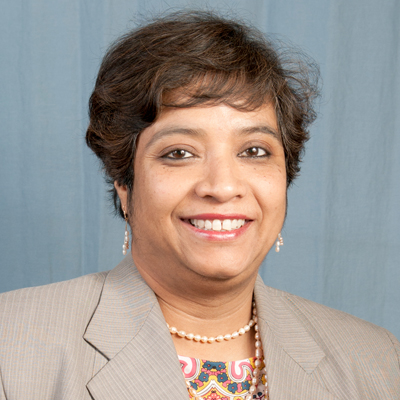Cross disciplinary research advances sophisticated bone engineering technologies
Broken bones are not considered a threatening medical emergency. However, as we age, and bones become more brittle, broken bones can be a challenge for patients and providers alike. Similarly, in areas where there is little medical attention or a natural disaster has caused a high rate of injury, broken bones are a common and challenging threat. Dr. Susmita Bose, Herman and Brita Lindholm Endowed Chair Professor of the School of Mechanical and Materials Engineering as well as Affiliate Professor of Chemistry at Washington State University, studies bone tissue engineering and drug delivery in order to improve health and save lives. Her research helps to address age related global problems in society by crafting sophisticated technologies for aging populations that allow individuals to lead active lifestyles and treat sport related injuries or musculoskeletal problems. Thus, by combining engineering and materials science, Dr. Bose is aiding in the development of bone modification, infection, and treatment. Such research will have an impact on a large portion of the population including, patients with osteoporosis, patients in need of hip or knee replacements, war veterans with clinical needs, and even those with neurological problems.
With the belief that any health related research can “only be successful with cross-disciplinary understanding and collaboration,” Dr. Bose has devoted her professional career to diverse collaboration across many fields. Such collaboration has resulted in more than 200 peer reviewed articles, three issued US patents, five edited books and over 5,800 citations as well as science that is likely to make an impact on patients in the future. Furthermore, her extensive research works actively to incorporate physicians into the process of inquiry in order to translate basic research to real clinical needs sustainably. In so doing, Dr. Bose has not only contributed to science and medicine but is also helping to educate future scientists who receive hands-on research experience to tackle complex interdisciplinary problems related to human health.
Current research includes:
-
Bone Tissue Healing: Dr. Bose’s contribution towards calcium phosphate based resorbable bioceramics focuses on controlling their properties making them ideal for bone tissue engineering. Because different bones require different amounts of time to heal, Dr. Bose’s work on controlled degradation bioceramics helps tailor bone tissue engineering to meet the demands of individual bones.
-
Printing Bone Tissue Engineering Scaffolds: Use of 3D printing technology can revolutionize the use of synthetic materials in human health by providing solutions to patient specific clinical needs. Dr. Bose’s work on 3D printed bone tissue scaffolds can be used in both bone tissue engineering as well as drug delivery. Her work has demonstrated improvement in mechanical strength and bone tissue integration in 3D printed scaffolds over conventionally processed scaffolds and has been featured by many news agencies and Internet sites all over the world including the BBC, NPR, CBS, MSNBC, ABC, and many others.
-
Drug Delivery: Using calcium phosphate bioceramic, composite materials, and scaffolds, Dr. Bose’s work also extends into the field of drug delivery. The challenge with the ceramic-based drug delivery system is the burst release of protein or drug from the delivery vehicle. Dr. Bose has shown that drug or biomolecule release kinetics can be controlled. Thus, her work can help solve existing technological challenges to improve the quality of life for mankind.
-
Improving Bone Growth and Infection Control: Using laser and plasma assisted coating, Dr. Bose’s group has shown that the interfacial microstructure, mechanical strength, and bioactivity can be improved. These coated implants can also be used as multifunctional devices, not only providing effective mechanical support but also as a drug delivery device. Thus, this aspect of her group’s research is focused on understanding the influence of surface modification for load bearing metal implants towards bone healing and drug delivery.
-
Cell Material Interactions: Bone remodeling is a continuous cyclic process where action of both OB and OC cells need to be controlled in a certain way so that they are monitored simultaneously. Dr. Bose has demonstrated that dopants can also alter the osteogenic and angiogenic properties of devices to optimize the potential control of different protein expression rates related to OB and OC functions.
Bio
Growing up in India, with parents that were high school math and science teachers, Dr. Susmita Bose’s environment taught her to recognize the importance of hard work, planning, persistence, staying focused, honesty, and integrity in life. During middle school, she had a dream of coming to the US and pursuing higher studies. She has since come a long way to achieve excellence in academics and in her professional career. She now continues to give the same message to her students she mentors, “dream high, dream big.”
After receiving her B.S. from Kalyani University in India and M.S. from the Indian Institute of Technology (IIT), she then pursued her Ph.D. at Rutgers. In 1998, she joined the MME at Washington State University as a research assistant scientist. In 2001, she was offered a tenure track Assistant Professor position in MME and was promoted to an Associate level in 2006 and finally a full professor in 2010. As the Herman and Brita Lindholm Endowed Chair Professor of Materials Science and Engineering and an Affiliate Professor in the Department of Chemistry at Washington State University, her research has the potential to make an incredible impact on society. In 2007, she was a Council of Scientific and Industrial Research (CSIR) Fellow in India at the Central Glass and Ceramics Research Institute (CGCRI, Jadavpur, India). In 2008 and 2014, she was a Visiting Professor at Harvard University (Cambridge, MA).
Aside from research, in her free time, Dr. Bose enjoys her role as a mother of two wonderful little boys. She also practices and teaches Indian classical music; she has performed at many places around the world. Her passion is to study various aspects of herbal medicine and natural stimuli to make health better. Dr. Bose’s passion for sharing her knowledge with the next generation as a mother, professor, wife, and daughter exemplifies her positive energy and open mind that she tries to maintain in each facet of her life.
Website: http://www.mme.wsu.edu/people/faculty/faculty.html?bose


